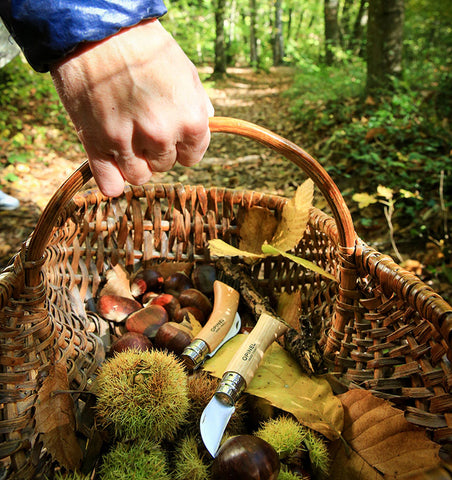Australia is renowned for its diverse culinary landscape, boasting an array of unique and delicious ingredients. Among these treasures are Australian chestnuts, which have gained popularity for their rich flavour, versatility in cooking, and nutritional benefits. Cultivated in various regions across the country, Australian chestnuts offer a delightful addition to both sweet and savoury dishes, making them a sought-after ingredient in many kitchens.
So what are the different chestnuts in Australia? Here’s a quick introduction into the Diverse Varieties of Australian Chestnuts:
- Buffalo Queen: Known for its large size, the Buffalo Queen chestnut is better boiled than roasted.
- Bouche de Betizac: Known for its sweet flavour, the Bouche de Betizac chestnut is easy to peel, making it ideal for roasting or incorporating into desserts.
- Red Spanish: Characterised by its vibrant red-brown hue and rich, meaty texture, the Red Spanish chestnut found best boiled or steamed.
- De Coppi Marone: This variety of chestnut is esteemed for its exceptional taste and smooth texture, making it a favourite for snacking or adding depth to various recipes.
- Purtons Pride: Renowned for its large size and sweet, buttery flavour, Purtons Pride chestnuts are often enjoyed roasted, boiled or steamed, and is greatly used in confections for their rich, indulgent taste.
Explore the N°07 Chestnuts, garlic, pitt

Seasonality and Foraging:
The season for fresh Australian chestnuts typically spans from March to July, offering a prime window for enjoying these delectable nuts at their peak freshness. While some may purchase chestnuts from markets or specialty stores during this time, enthusiasts also have the opportunity to forage for them in certain regions of Australia. Forested areas, particularly those with chestnut trees such as the Dandenong Ranges in Victoria or the Southern Highlands of New South Wales, provide ideal foraging grounds for those eager to gather their own chestnuts and experience the thrill of harvesting these culinary treasures firsthand.
It's essential to research local regulations and obtain any necessary permits before embarking on a foraging adventure to ensure responsible and sustainable practices.
P.S. Don't forget to put on gloves to protect your hands, chestnut shells are very spiky!

How to select sweet chestnuts
It's important to choose the right sweet chestnut when you're collecting them or buying them at the supermarket. Check they're glossy, not too damaged and that none have any holes. Once you're at home, put them in water to check that all your chestnuts are healthy and edible. The ones that bob back to the surface are probably empty or not edible.
How to cook sweet chestnuts
There are several ways to cook sweet chestnuts. If you want to boil them, you just need to make an incision in the lanula (the lightest bit) with the N°07 Chestnuts, garlic, pitt so the chestnuts don't explode, and then pop then in boiling water for about 10 minutes. Afterwards, you can just remove the shell and the thin peel
You can also pop them in the microwave for around a minute. Make sure you don't leave them in for too long.
You can also roast sweet chestnuts in the oven, for which you'll still need to slit the lanula. Arrange them on a baking tray and roast them at 210°C for around 20 minutes.
If you've got an open fire or woodburner and a chestnut pan (with holes in), you can roast your sweet chestnuts on a wood fire. Slit the lanula, arrange the sweet chestnuts in the pan and roast them for 20 minutes.
You can also use sweet chestnuts in savoury or sweet dishes. Who doesn't like a lovely chestnut broth, chestnut pâté, chestnut purée or even an apple and chopped chestnut crumble?


